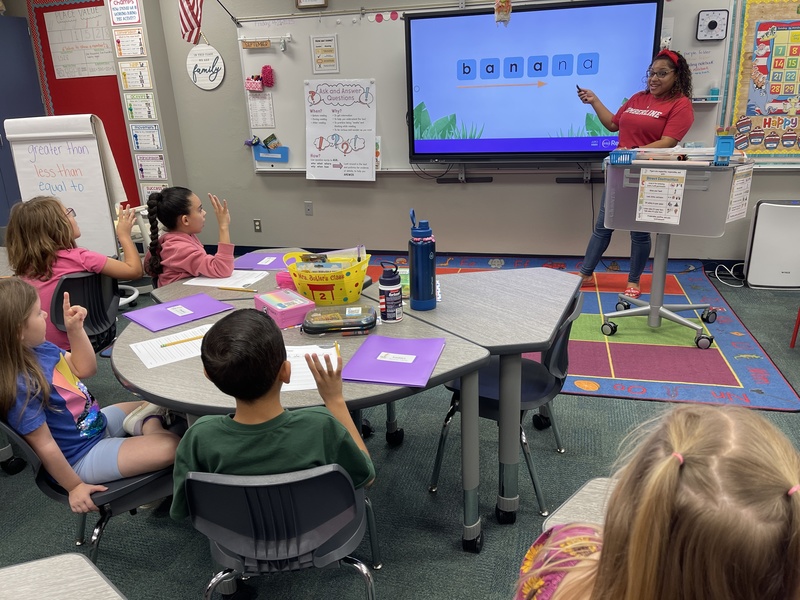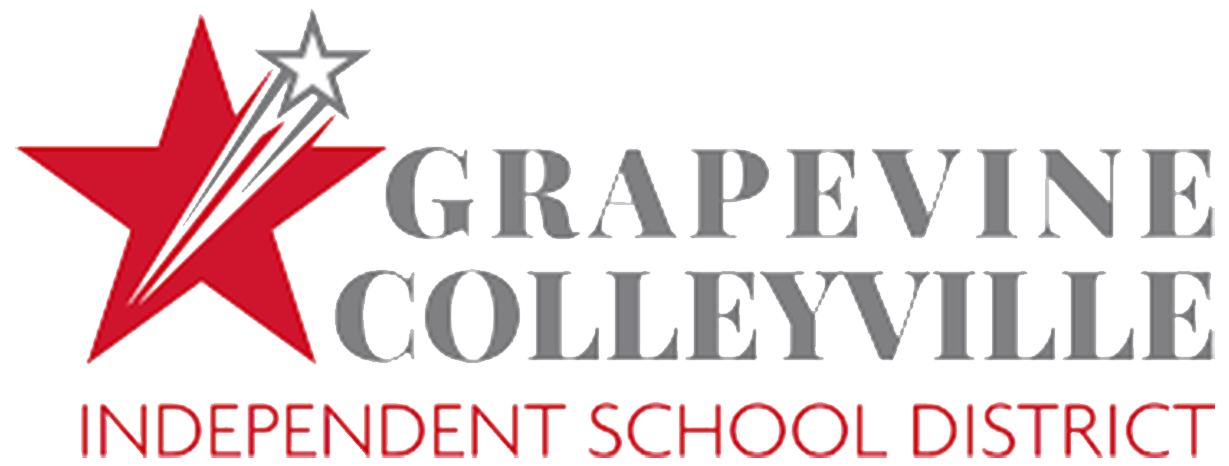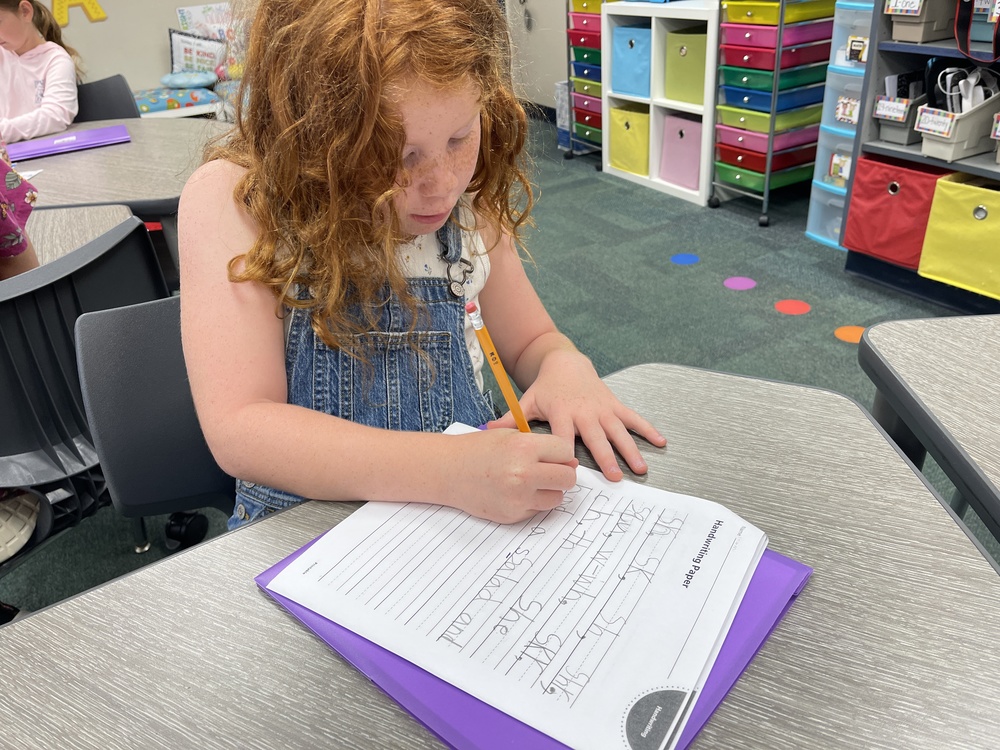GCISD has launched Curriculum Corner to provide families an inside look at the academic resources and progress of students. Look for more stories to be shared throughout the school year.
From sounding out their first letters in kindergarten to analyzing complex literature in high school, GCISD students are building strong foundations in reading that set them up for lifelong success.
“Our approach is really the perfect blend of research and creating an experience for our students that’s engaging,” said Director of Elementary Instruction Nancy Hale, who oversees English language arts for kindergarten-fifth grade. “The science of teaching reading gives us the research and structure, but the art of teaching comes from our teachers; they make reading come alive for students.”
At the elementary level, GCISD’s reading instruction is grounded in the science of teaching reading, which focuses on five key pillars: phonemic awareness, phonics, fluency, vocabulary and comprehension.
“When teachers design workstations for their students, they center activities on those pillars to help students continue to grow.”
Each day, elementary students in grades kindergarten through second participate in structured literacy blocks for 40-45 minutes where they focus on phonics.

“They are working on sounds, blending letters and creating words,” according to Hale, adding that the class also has blocks for writing and reading comprehension.
Data plays a major role in helping teachers tailor instruction. The district’s i-Ready diagnostic assessments, used in kindergarten-eighth grade, give teachers immediate insight into each student’s progress. “With i-Ready, teachers don’t have to wait for end-of-year test results,” Hale said. “They can see areas of need right away and adjust instruction to help students grow.”
Knowing students’ various levels helps teachers tailor individualized instruction and use i-Ready to deliver personalized lessons.
“One student might be working on comprehension, another might be working on vocabulary words, or another might be working on practicing how quickly they can read a passage to increase their fluency,” Hale stated.
While some time is provided to continue working on foundational skills in grades three through five, the focus at these levels shifts to reading to learn in other subjects. “The comprehension piece becomes more important,” Hale emphasized.
In addition to strengthening professional development, the district has focused on providing teachers better tools, such as the HMH reading and writing resource that the district purchased three years ago for elementary campuses.
“HMH is a comprehensive resource that covers all of the Texas Essential Knowledge and Skills (TEKS), Hale explained. “Before HMH, teachers were piecing together multiple resources. Now we have one cohesive resource, and it’s available in Spanish, which is a huge benefit for our teachers and our English learners.”
In middle school, students continue to have English language arts classes, but they also have electives that, according to Michael Crow, Director of Secondary English Language Arts and Advanced Academics, “require reading throughout all of the academic subjects.” Then in high school, they are introduced to more advanced courses that include research and where students have to present evidence for their work.
“One of the biggest things we’re emphasizing is text evidence,” Crow stated. “Even if a student gives the right answer, we encourage our teachers to follow-up with a question, such as ‘How do you know?’ ‘Where did you find it in the text?’ ‘What led you to that conclusion?’ That’s where deeper understanding begins.”
Crow said teachers are also helping students strengthen their career skills by introducing informational texts. “As adults, a lot of our reading on a daily basis is informational text. We've seen some struggle in those areas, just like many districts across the country, because it's more of a novel concept to students.”
To prepare students for this needed future skill, Crow says that informational texts have been incorporated into classes so students interact with different types of passages. “What we’ve done in the curriculum is align it with what the class might be reading, whether it be fiction, poetry or otherwise, and compare it to an informational text. It allows the teacher to ask ‘What’s similar in the structures?’ ‘What’s similar in the author’s purpose?’ ‘Is the message trustworthy?’”
Secondary students also learn to actively engage with text by annotating, questioning and connecting ideas. “We don’t want passive readers,” Crow said. “In a perfect world, you’d see notes and highlights all over their pages—evidence that they’re thinking as they read.”
Across all grade levels, the goal is to develop strong readers who can think critically.
“We want every student to see themselves as a reader and a writer,” Hale said. “Because once students can read, comprehend, and express their ideas clearly, they can succeed in anything they choose to do.”
Crow agreed, adding, “They’re going to have to do that in college or in the workplace all the time. And if you’re a strong reader and writer, you are going to set yourself up for success in other areas.”

